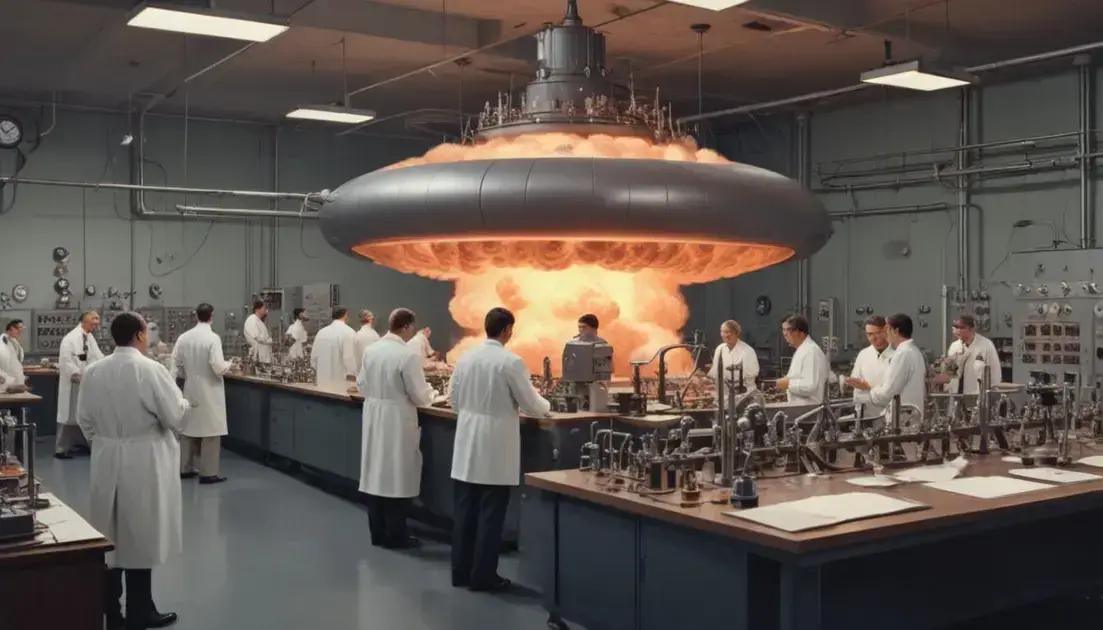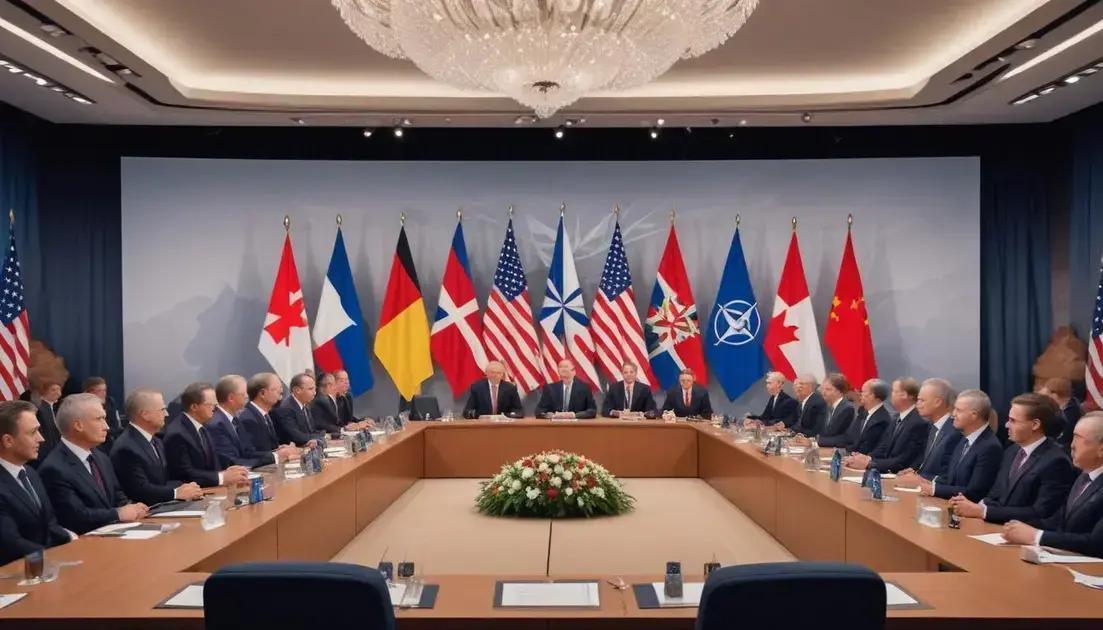
The birth of the hydrogen bomb: science and supremacy
The legacy of nuclear weapons is complex, impacting global politics, scientific advancements, and ethical discussions. Since their introduction in World War II, these weapons have changed warfare and international relations. Efforts for disarmament and treaties like the Nuclear Non-Proliferation Treaty aim to manage their spread and encourage peace. The development of nuclear technology also led to advancements in medicine and energy. Ultimately, understanding their legacy prompts serious consideration of safety and responsibility in a nuclear age.
The hydrogen bomb represents a significant milestone in scientific achievement, but it also poses profound moral questions. What does this mean for our future?
The science behind the hydrogen bomb
The hydrogen bomb relies on the fusion of hydrogen isotopes to release massive amounts of energy. This process is similar to what happens in the sun. When hydrogen nuclei collide with enough force, they can combine to form helium, releasing energy in the form of an explosion.
How Fusion Works
Fusion requires extreme temperature and pressure, conditions that were once only found in stars. To achieve this on Earth, scientists developed complex techniques. They use conventional explosives to compress the hydrogen fuel in a bomb.
The Role of Isotopes
In hydrogen bombs, isotopes like deuterium and tritium are often used. Deuterium has one proton and one neutron, while tritium has one proton and two neutrons. These isotopes are key to the fusion process and are more easily fused than regular hydrogen.
Chain Reaction
Once the fusion reaction starts, it creates a chain reaction that releases a tremendous amount of energy. This is what makes the hydrogen bomb so powerful compared to atomic bombs, which rely on fission, or splitting heavy nuclei.
Scientific Breakthroughs
The creation of the hydrogen bomb represented a major milestone in nuclear physics. Scientists like Edward Teller and Robert Oppenheimer made vital contributions during its development. Their work opened new avenues for both energy production and weaponry.
Understanding the science behind the hydrogen bomb helps us grasp the implications of nuclear power. It’s crucial to have discussions around the ethical challenges and dangers associated with such powerful technology.
Impact on global politics
The impact on global politics from the hydrogen bomb is profound. After its development, countries became more aware of nuclear power’s weight. Nations felt compelled to build their own arsenals, leading to a race for nuclear supremacy.
Nuclear Deterrence
The idea behind nuclear deterrence is simple: countries with nuclear weapons are less likely to go to war. They fear the catastrophic results. This, however, creates tensions that can be explosive.
Diplomatic Negotiations
Countries now engage in serious talks to manage nuclear arms. Treaties like the Non-Proliferation Treaty aim to prevent the spread of these weapons. They encourage countries to disarm and limit nuclear development.
Regional Conflicts
In areas like the Middle East and Asia, the hydrogen bomb influences local tensions. Nations view their neighbors’ nuclear programs with concern. This has led to alliances and rivalries based on nuclear capabilities.
Security Policies
Governments must rethink their defense strategies. Many invest heavily in missile defense systems to counter the threat of nuclear attack. The hydrogen bomb shapes military policies worldwide.
While it serves as a deterrent, the existence of such weapons raises many questions about safety and ethical use. Understanding this impact is key to navigating today’s political landscape.
Comparison with atomic bombs
The comparison with atomic bombs shows key differences in power and technology. Atomic bombs use fission, which splits heavy atoms. In contrast, hydrogen bombs use fusion, fusing lighter atoms to release energy.
Energy Output
Hydrogen bombs produce much more destructive power than atomic bombs. While atomic bombs can cause massive damage, hydrogen bombs are far greater in scale. One hydrogen bomb can equal the power of many atomic bombs combined.
Construction and Design
The design of hydrogen bombs is more complex. They require a fission bomb to trigger the fusion reaction. This makes them harder to create and control. Atomic bombs, on the other hand, have simpler designs.
Historical Context
Both types of bombs changed warfare dramatically. The first atomic bomb was dropped in World War II. Soon after, nations began developing hydrogen bombs during the Cold War. This escalated the arms race and fears of nuclear conflict.
Use in Warfare
So far, atomic bombs have been used in warfare. Hydrogen bombs have never been used in conflict, but their existence affects global politics. Their mere presence serves as a deterrent to war.
Understanding these differences helps us grasp the implications of nuclear warfare. Knowledge about atomic and hydrogen bombs is essential in discussions about peace and security.
Public perception and fear
Public perception and fear surrounding hydrogen bombs is significant. Many people view these weapons as terrifying due to their destructive power. The thought of such weapons can cause anxiety about global safety.
Media Influence
Movies and news stories often portray nuclear weapons dramatically. These portrayals can shape how people feel about them. Horror stories and documentaries increase awareness but also fear.
Historical Events
Past events, like the bombings of Hiroshima and Nagasaki, have left a lasting mark. People remember the devastation and suffering caused by nuclear weapons. This history fuels ongoing concerns.
Government Messaging
Governments often emphasize the dangers of nuclear weapons. This can create fear, but they’re also promoting deterrence. Unsafe nuclear development by other countries leads to more public anxiety.
Calls for Disarmament
Many people believe in nuclear disarmament. They argue that eliminating these weapons will make the world safer. Activist groups work hard to raise awareness and push for change.
Ultimately, understanding public perception helps clarify fears about nuclear weapons. It is essential to have open discussions about these issues and how they affect everyday life.
The legacy of nuclear weapons
The legacy of nuclear weapons is complex and far-reaching. Their existence has shaped global politics, science, and society. These weapons have left a lasting impact on how nations interact.
Historical Context
Since their first use in World War II, nuclear weapons have changed warfare. Countries developed these weapons to deter enemies and assert power. The Cold War intensified this arms race, creating stockpiles worldwide.
Global Treaties
Efforts to manage nuclear weapons have led to international treaties. The Nuclear Non-Proliferation Treaty aims to prevent the spread of these weapons. Such agreements focus on reducing arsenals and promoting peaceful uses of nuclear energy.
Scientific Advances
The legacy of nuclear weapons also includes advances in science. Nuclear technology plays a role in medicine, energy, and scientific research. Techniques developed for weapons have found peaceful applications.
Ethical Questions
The existence of nuclear weapons raises serious ethical concerns. Many people question the morality of possessing such destructive capabilities. Activists argue for disarmament and emphasize the need for a safer world.
Understanding the legacy of nuclear weapons is essential. It helps us realize the balance between power and responsibility in our modern world.
Conclusion
In conclusion, the legacy of nuclear weapons is a vital part of our history. These weapons have changed how countries interact and how we view security. While they have led to significant scientific advancements, they also raise serious ethical questions.
Understanding the complex impact of nuclear weapons helps us make informed decisions about the future. It’s important to learn from the past and work towards a safer world. By promoting disarmament and peace, we can hope for a global environment where these weapons are no longer a threat. Ultimately, the legacy of nuclear weapons challenges us to strive for responsibility and cooperation in our international relationships.


